Fermented Salsa is so much better than just your normal everyday salsa! First of all, it’s filled with gut loving probiotics which we all need to thrive.
Second of all it’s a great way to preserve your harvest or bulk purchases of tomatoes and capsicums (Bell peppers). This is a very easy recipe to make and once you start you will be hooked!
If you are a bit hesitant about fermenting food don’t worry! It’s really quite safe and once you start you will see how easy it is to do. So let’s begin with what is fermentation?
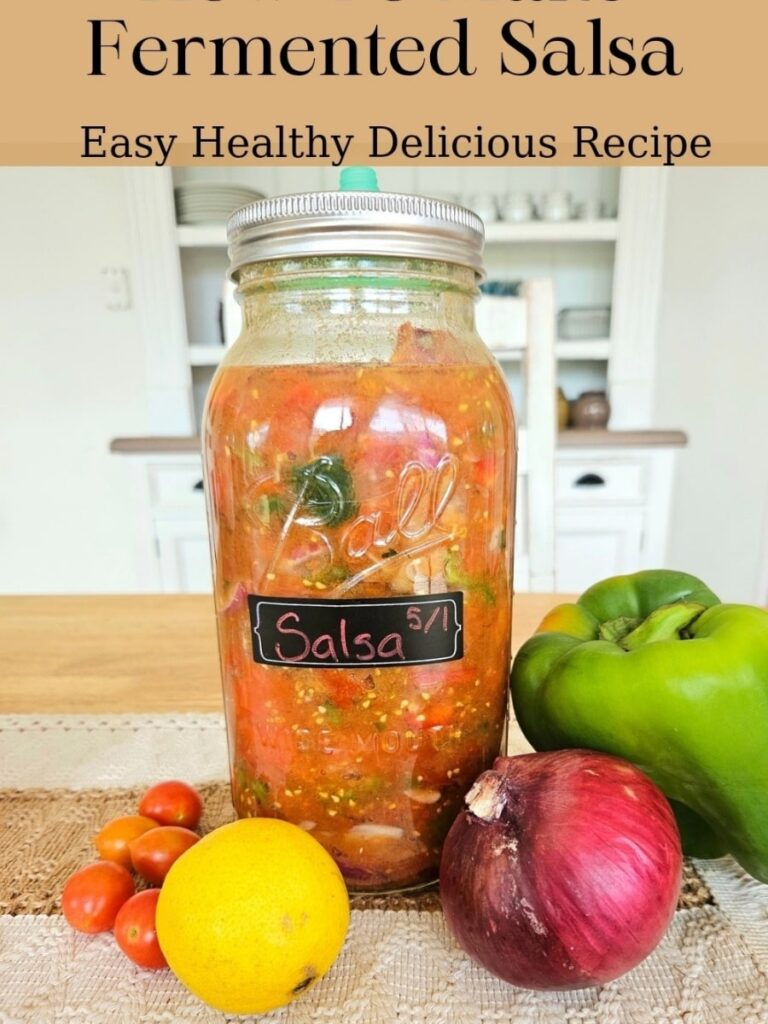
What is lacto-fermentation?
In a nutshell lacto fermentation is when you submerge fruits or vegetables in a brine, which is a salt and water solution. Or if you salt the food and it releases its own liquid becoming submerged that way.
The bacteria lactobacillus is the main player here and thrives under conditions that do not have oxygen which is why you want your food submerged.
It breaks down the sugar in the food and turns it into lactic acid which gives the food it’s delicious tangy flavour. That’s why you don’t have naturally sweet, fermented foods the sugar gets devoured first!
Bad bacteria don’t thrive very well under salty anaerobic (no oxygen) conditions which is why fermented food isn’t generally pretty safe to eat.
The good bacteria take over before the bad ones can. You will clearly be able to smell if the food is off.
If it has a horrible smell don’t eat it! Properly fermented food might have a strong tangy kind of smell but not a rotten smell.
You can always do your research to find out more but it’s pretty safe to make. Fermentation has been around for thousands of years to store food and make it easier to digest.
Salsa Ingredients
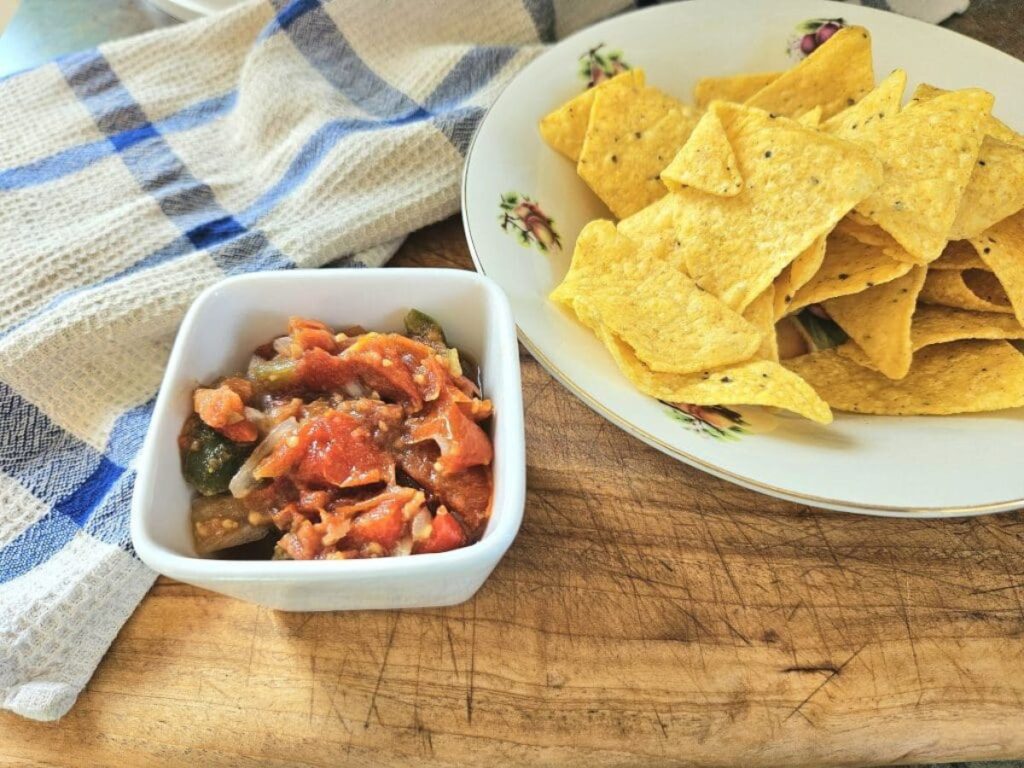
For this recipe you will need a few key ingredients. These can be from your garden or from the shop it doesn’t matter either way.
I have used frozen tomatoes and frozen coriander from my garden as well as fresh produce and it has worked perfectly doing it either way. Make sure to wash your produce before hand..
Tomatoes 8 medium sized tomatoes or lots of cherry tomatoes about 4 cups worth
Capsicums (Bell peppers) 1 red and 1 green
Onion (white or red)
Lemon or lime juiced
2 tbsp sea salt
4 Garlic cloves or 1/2 tbsp garlic powder
1/2 cup coriander chopped or you can use frozen either works well!
1/2 tbsp cumin
1/2 tbsp sweet paprika
Tools You Might Need
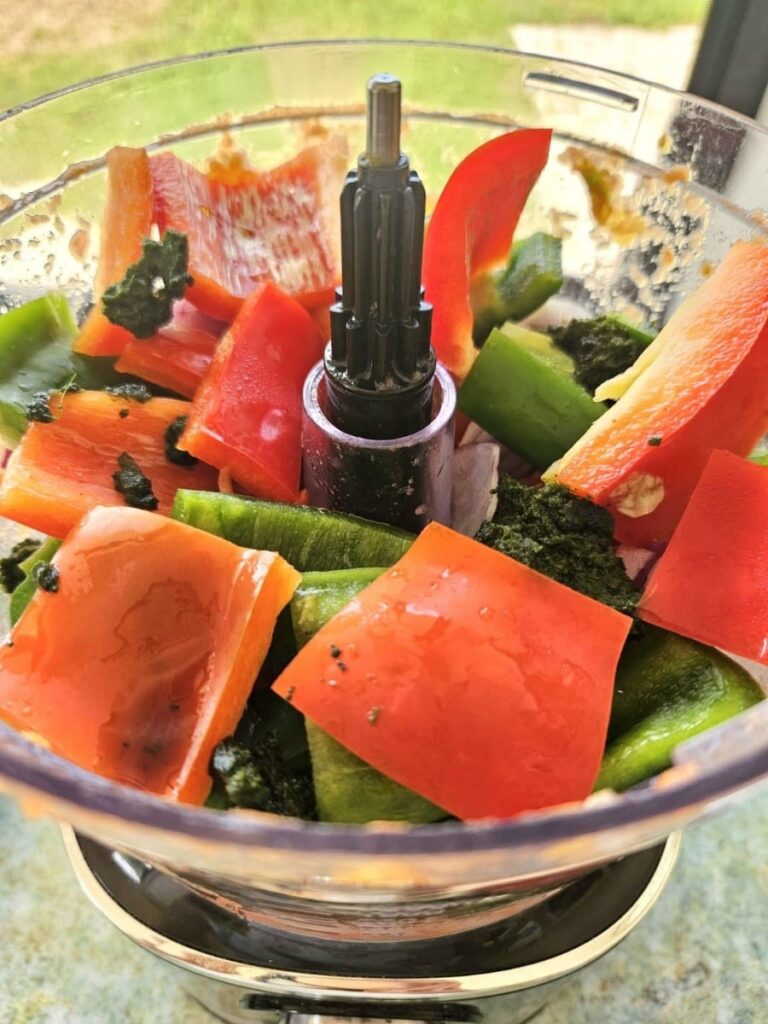
This post contains affiliate links, which means I make a small commission at no extra cost to you. See my full disclosure, Policy.
You do not need all the tools I will list. I will let you know what you must have and what you can live without. The extra things I list I personally like now that I ferment regularly! So, let’s first start with what you need!
Knife- make sure its sharp remember more accidents happen with blunt knives than sharp ones!
cutting board
2 litre mason jar with a lid
bowl for mixing
These are things you do not need to have but are handy!
Food processor– I use this all the time in my kitchen for chopping ingredients and making butter! I do like this brand and it even has a blender attachment so it’s multifunctional!
Weights– These are handy if you do a bit of fermenting as they keep all your ingredients underneath the brine.
Fermentation lids– I really like these as you don’t have to worry about constantly burping your jars. These lids allow the pressure build up to be released naturally! Or of course you can just remember to burp your jars every 12 hours or so to let out some of that built up pressure!
How To Make Fermented Salsa (Step by Step)
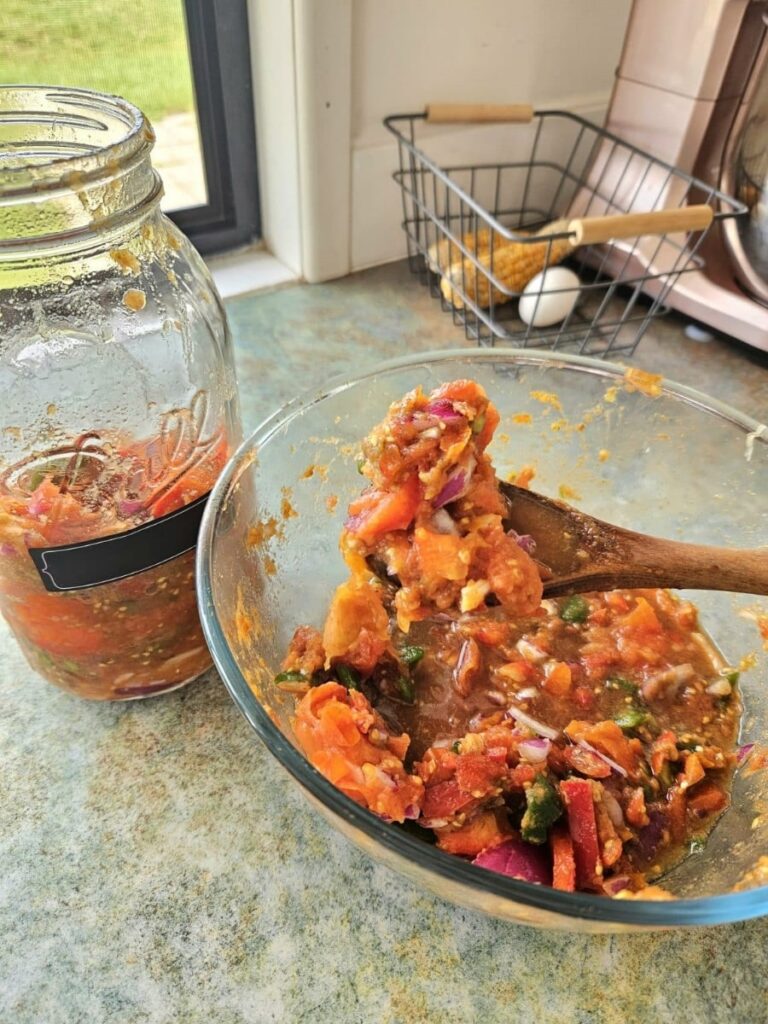
Making fermented salsa is super easy!
- Either chop up all your ingredients into bite size pieces by hand or rough chop and throw them into your food processor and pulse a few times.
- Afterward mix in all the spices and lemon juice.
- Once it’s all mixed nicely together give it a little taste and see if you like it. If it’s tasty start placing the mixture into your clean glass mason jar and put the weight in if you have it. If not it’s fine just place the lid on top! You do not need to create a separate brine for this recipe. The salt will bring out enough liquid from the tomatoes and other vegetables that it should be completely submerged in your jar.
- Place the lid on and let it sit away from direct sunlight for 2-3 days on the counter. Depending on how hot it is will determine if it’s ready in 2 or 3 days so give it a taste after 48 hours and see if you like it. You should see bubbles forming in your jar this shows that the fermentation is happening!
- Remember to burp your jars every 12 hours or so to let out the built in pressure. Just open the lid a little and then close it back up again. I also sometimes place a bowl under the jar as it can leak out extra liquid!
- Once you like the taste of your salsa place it into the fridge. Will keep for several months in the fridge and enjoy whenever you want salsa!
Questions and Answers
How do you store salsa?
Storing fermented salsa is very easy you can place it into the fridge with a tight lid. It should last several months in the fridge no problems.
Just give it a smell and little taste if you are worried but honestly you will most likely eat it up before then.
You can also freeze it. Just remember when it comes out of the freezer it might be a bit on the mushier side but it’s still very tasty you can even add it as a pasta sauce replacement!
It can keep in the freezer for quite a while if stored well 6 months up to even a year!
What is the white mold growing on my salsa?
The white mold is not actually a mold but a yeast called Kahm yeast. It’s quite common to find a thin layer sitting on top of the liquid when fermenting vegetables.
You can simply scrape that top layer off and the vegetables underneath should be completely fine to consume. Kahm yeast is not dangerous you just don’t want actual mold spores growing.
A Few Ways To Enjoy Salsa!
There are many ways to enjoy this salsa. I’ve enjoyed it with nacho chips, in tacos, on scrambled eggs, and on top of chicken salad. Get creative and enjoy eating this probiotic rich fermented salsa! Let me know if you give this recipe a try and how you liked it!
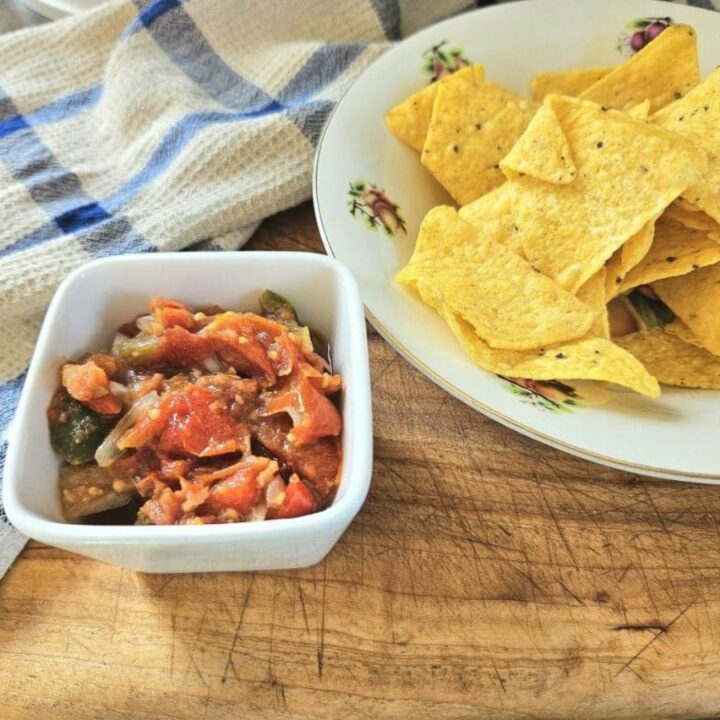
Fermented Salsa Recipe
Homemade lacto fermented salsa is a probiotic rich food and great way to preserve the harvest! This recipe is easy to make and taste amazing!
Ingredients
- 8 medium size tomatoes chopped about 4 cups worth.
- 2 capsicums (bell peppers) I like to use different colours but you don't have to.
- 1 red or white onion chopped
- 1/2 cup coriander
- 4 garlic cloves or 1 tsp garlic powder
- 1 1/2 tbsp sea salt
- 1/2 tbsp cumin
- 1/2 tbsp sweet paprika
- juice of 1 lemon or lime
Instructions
- Either chop all ingredients into bite size pieces or rough chop and place in your food processor and pulse a few times.
- Mix in the spices and lemon juice. Taste it to see if you like it!
- If you like the taste place the mixture into your clean mason jar.
- Add a weight if you have but if not it's okay just put the lid on.
- Let it sit away from direct sunlight on the counter for 2-3 days. If it's hot it will take only 2 days if it's cooler it can take 3 days. Make sure to burp your jar every 12 hours or so to release the built-up pressure inside.
- Give it a taste after 2 days and see if you like it.
- Once you like the taste and see bubbles rising place it in the fridge. It will last several months in the fridge. And enjoy eating!
